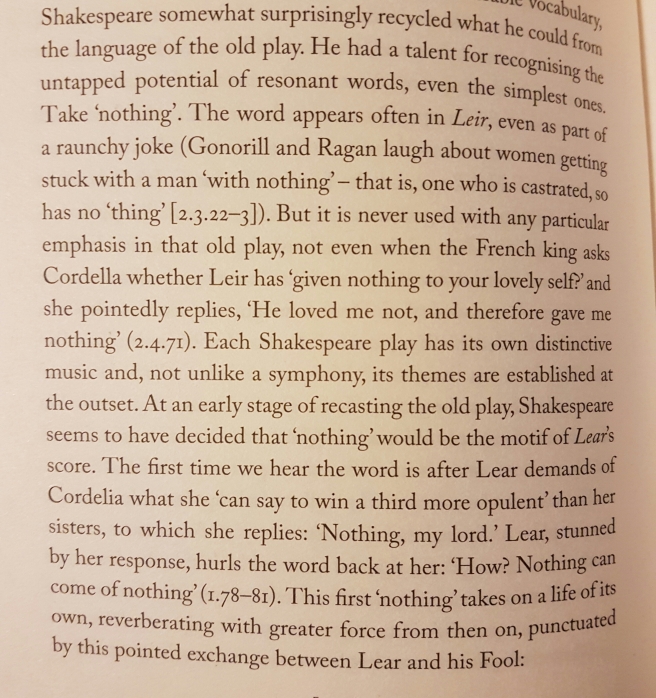‘I think that pupils are rubbish at writing dialogue,’ exclaimed the teacher.
‘Do you really think so?’ Replied his colleague.
‘I honestly do,’ he responded honestly.
‘Why do you think that’s the case?’ Asked his colleague
‘Oh, it’s not just pupils. You’ll find that most people – even established writers – are quite useless at writing dialogue.’ He said, scratching his head with bemusement.
‘You don’t say.’ His colleague didn’t say.
I’m teaching creative writing at the moment. My pupils are generally good at it. They’ve taken on board my advice about avoiding cliches in their narratives and descriptions. They can do sentence variety. They understand that incongruous similes can stick out like a sore pollex. But they, like virtually every other pupil I’ve taught – including the ridiculously talented writers – are pretty bad at dialogue. My previous advice for dealing with this flaw was pretty bad as well: keep it to an absolute minimum or avoid it entirely. This is just about manageable in a 500 word controlled assessment or exam answer but isn’t really helping any aspiring novelists I teach. And on a more basic level, decent dialogue can very much enliven and enhance even short pieces of writing.
So this year I’ve been determined to talk about talk. To teach it properly. And to do this, to do dialogue justice, I’ve started off by showing bad dialogue. The type (like the opening to this blog) that has you hiding behind the sofa, waiting for it to go away. To begin with, I allow my pupils, untutored in the ways of decent dialogue, to fall into some obvious traps. Today, I set my Year 10 group a seemingly simple starter: write six lines of dialogue between two characters, one of whom is trying to hide something. They found it very difficult.Here’s some of the obvious mistakes that these smart but inexperienced writers made:
- ‘Ping pong’ dialogue – characters respond to dull questions or statements with equally dull responses. There is usually a repetition of words: ‘Would you like to go to the cinema?’ ‘Yes, I’d love to go to the cinema’. This backward and forward exchange becomes interminable, worthless filler.
- Dialogue that follows the rules of polite conversation – similarly, people interrupt, change the topic, ignore the question, stay silent. My pupils’ dialogue was far too polite to be evasive. It lacked conflict.
- Conversations that sound like prose – full, perfectly punctuated grammatical artifacts, rather than realistic sounding snippets (see example no.1). ‘Fancy the cinema?’ ‘Go on then’ is not the greatest dialogue ever but at least sounds like it’s come out of a human’s mouth.
- Telling not showing – ‘Do you still love me?’ ‘No, I don’t love you anymore…’ is the default urge when writing dialogue. It’s more difficult to ‘show’ during conversation but worth perseverance: ‘Want to go to bed now?’ ‘Let’s watch the end of the film’.
- Overdoing the exposition – ‘I know that you went to Oxford, and got a first in Physics, but that doesn’t mean I have to listen to your opinion on everything, John.’
- Tag thesaurus – Elmore Leonard, widely acknowledged as a master of dialogue is adamant that you should never use a verb other than “said” to carry dialogue. And that’s only if it isn’t clear who’s speaking in the first place. My pupils generally agreed that their writing improved dramatically after getting rid of the ‘cried’ and ‘shouted’ and ‘hesitated’. We worked on showing the feelings using the actual words, along with (bits of) filler and aposiopesis. Anyone who has had a lesson come to a premature sticky end after reading aloud ‘“My dear Holmes!” I ejaculated’ will surely agree with this one.
- Adding unnecessary adverbs – again Leonard nails this one: ‘never use an adverb to modify the verb “said”…he admonished gravely’.
- Overdoing dialect – Unless you’re Irvine Welsh it’s nae wise to likesay use a pure rush of vernacular ’til yer reader cannae stand it nae more, ken.
- Shoddy free indirect speech – the teacher told his pupils that he was tired of the torturous summary of the conversation that went on for what seemed like pages. Yes, he informed them, he wanted then to incorporate this to avoid unnecessary chunks of dialogue but, as he pointed out once more, he wanted them to use it sparingly.
- Dialogue for the sake of it – I’ve written a hundred words of description. My page needs a bit of dialogue to break things up a touch. Let’s have a brief chat. William Sloane, author of The Craft of Writing, argues:
‘There is a tentative rule that pertains to all fiction dialogue. It must do more than one thing at a time or it is too inert for the purposes of fiction. This may sound harsh, but I consider it an essential discipline.’
And this is the really tricky part: you want your pupil’s dialogue to sound natural, without it ever really being natural. It’s not transcribed speech – that’s painful to read – but instead an engaging approximation.
So, we’re starting to get better at dialogue. Next (and another reason why I’d previously shied away from promoting the use of dialogue) we’ll talk about how to punctuate the bloody stuff…
‘Thanks for reading,’ said Mark.



